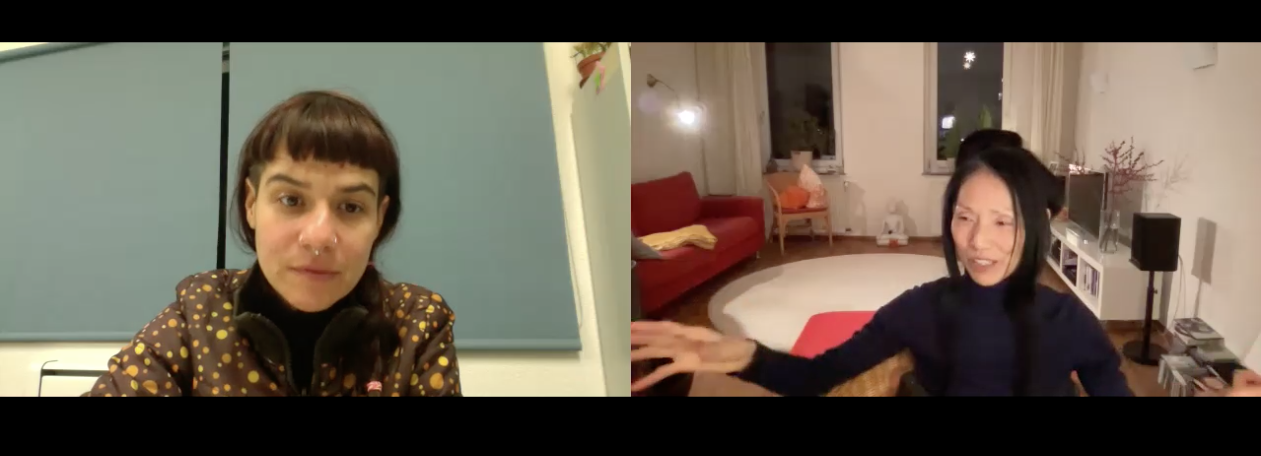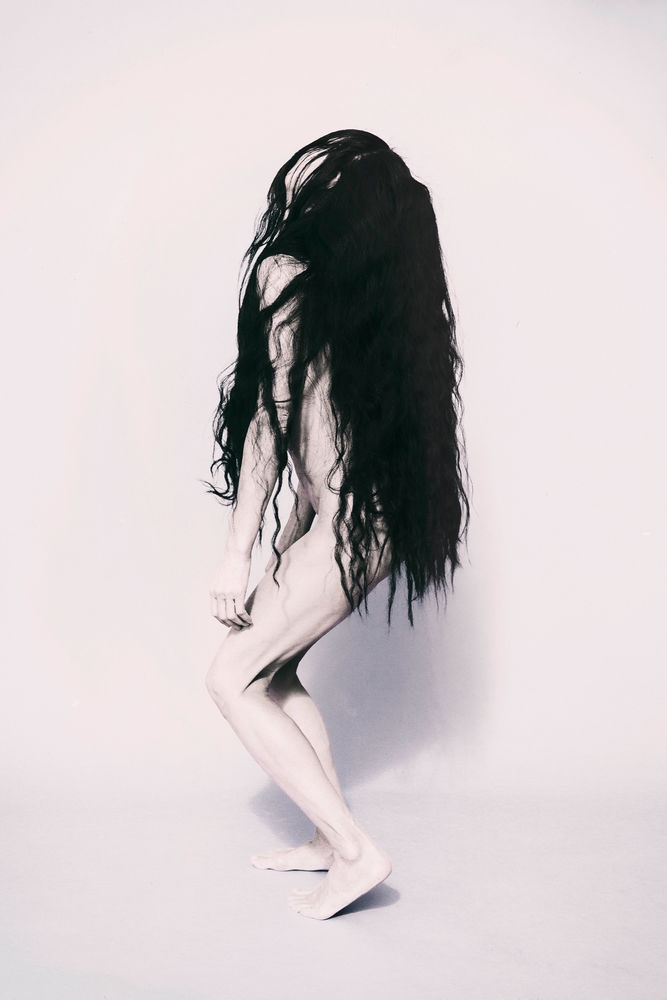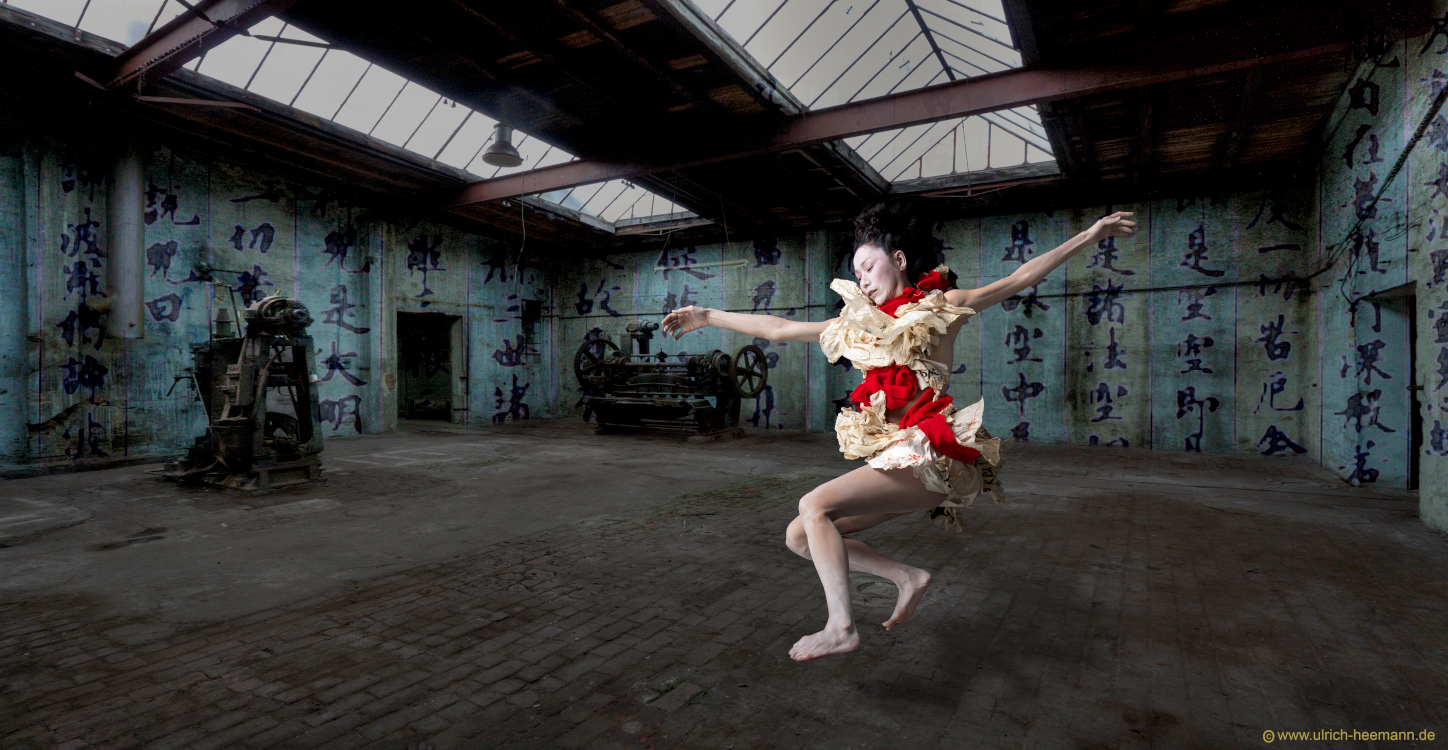Words by Dally Schwarz
It was October, the beginning of the autumn and almost the end of 2020. I was in my room in Lisbon and I remember it was during a hard moment of the COVID-19 crisis. I don’t remember how, but I found an online workshop named “The Power of Imagination Series”, by Minako Seki from her Creative Dojo. I was looking for some practice and as a dancer and martial arts practitioner I just jumped in. My first experiences with Butoh was in some workshops with Giohey Zaitsu (2014) and Tadashi Endo (2017) in Brazil and I was curious to know how Minako Seki developed her approach to this Japanese art. This series of online workshops started in 2020 and she developed six parts between 2020 and 2021. So I opened my window to the power of imagination and there I found Minako-sensei.
Minako Seki was born in Nagasaki, lived for a long period in Berlin and also lived for some time in Mallorca. She started her dance career in Tokyo with the Company Dance Love Machine, under the artistic direction of Tetsuro Tamura and Anzu Furukawa.
In 1986 Kunstlerhaus Bethanien, first Butoh Festival in Berlin, invited the company Dance Love Machine to perform in Europe and to participate in the festival ‘Die Rebellion des Korpers‘. In 1987 she founded and co-directed the company “Tatoeba -Theatre Danse Grotesque”, the first Butoh dance ensemble in Europe.
An interdisciplinary choreographer, she has developed her own fusion of contemporary dance and physical theater with the classic Butoh dance technique. She developed her Seki method with a holistic vision of the body integrating macrobiotic food, meditation, yoga, Butoh/dance and nature connection. She continues creating, dancing, teaching and this year she is finishing her first book. I asked Minako if we could have a meeting to talk and she gently accepted. It was a zoom meeting on a Friday night, December the 3rd, a special date for me and also almost the last eclipse of the year.

DS: Could you please present yourself to us?
MS: I am a dancer, choreographer, dancing teacher and also practicing meditation, cooking the macrobiotic and also teaching the Japanese traditional healing and including all that in my life/work. It is kind of holistic because the body is also holistic. That’s why I do this dealing with the mind, body, digesting, soul and spirit, all together, because it is the body.
DS: Why did you start dancing?
MS: The reason why I started to dance goes far back into my personal history! I was born in front of the ocean where I could always see the horizon. As I was a child, I had this curious desire to know what was behind this line. I had this strong question and I could feel this burning inside me: What is behind this line? The need to answer this question was really a basis for my creative outlook.
I’ve also had a lot of jobs throughout my career. This has enabled me to see and understand things from different viewing points and perspectives.
I have always had a strong desire to experience everything with my body. I like to put things into order and get a sense of things in order to comprehend life.
The experience of living and knowing my body was really important to me. For a long time I was on a journey of self-discovery; I thought I would be a costume designer, then a painter, then a musician. I passed through many art forms.
One time, a friend invited me to free music improvisations. We explored and experimented with music and the body, and objects.
I was helping a music group when I randomly stumbled upon a Butoh festival. Onstage was Dairakudakan, vary famous group of Japanese butoh from tokyo. There were more than 20 dancers, all with shaved heads, in white ink with a lily flower in their hands, doing a lot facial expressions.
I’d never seen anything like that but my impression was kind of familiar. In the same night I saw Yosuke Yamashita. He was my favorite musician who worked experimentally with jazz and the body. I met up with him and a dancer he was with, who subsequently invited me to a workshop.
I didn’t even know what a workshop was – at that time in the 70s it wasn’t really spoken about in Japanese culture! I went to this workshop and it was really intense. We cooked, danced and practiced together. It was very transformative for me.
DS: That’s really an amazing story. Why do you continue dancing?
MS: This is an interesting question because in the Butoh scene it is usual for people to dance even at an old age. In the 80s there were 10 groups of Butoh, and now it is only me and Yumiko Yshioka who remain from the 80s generation. I am now 60 years old and Yumiko is 68 so we are still onstage and dancing. So still dancing is not usual. In the Butoh we have a lot older people doing it, but in Berlin it is not so usual.
Every day I am cleaning the body through movement. This is for me a continuation. In another workshop in NYC recently one of the Butoh dancers and organiser from NYC asked me if I would be dancing in the next 10 years, and I answered I don’t know.
I don’t need to be a dancer all the time, but this continuation with the cleaning of the body I need to do always. My body tells me what I need to do all morning and it is a routine. Waking up all the tissues and bones, blood circulation, not only the digestion and physical aspect. And this is a bridge between cleaning the mind and physical body, to clean up and also connect to softer energy in the universe, that creates this architecture where I can see the amazing the body system we have.
This is a surprise, and as I said, the mystery, with this kind of grateful and thankful feeling that we are here and we can be warming all together. These are very basic and simple practices, but they keep me going. I become more grateful everyday. It radiates naturally towards people and I don’t feel like I have to put effort in to keep doing it.

DS: During your workshops a lot of people give this feedback about feeling alive and happy. Why do you think this practice can help people to have this mood?
MS: I like to see practice as a form of performance. I return to exercises of purification and do these simples things to have good energy. It is something that gets us through life. Like yoga practitioners, because they do it every morning, it keeps the mind and body connected. It cleans the body. It’s regenerative – much like the tide that turns, or the rituals that we humans do to purify ourselves.
DS: You call your practice Fundamental Awakening. What do you think is fundamental for people who work as artists and work with their body?
MS: There are many many things, it’s difficult to say. As artists we have a choice to be creative and exist in the moment. So if you want to be a creator you must observe how to overcome obstacles.
I think it helps to find truth in your life; to face and feel all your obstacles, to pass through all emotional states rather than to push out and pretend you are happy.
Get in touch with your emotional self and feel it. In all the activities we are doing in life we are looking for love, truth, trust, confidence to be happy. All of these are mind things, that’s why meditation is so important.
We don’t talk about fundamental awakening without mind matter because everything is connected to the mind, body, spirit. So, it’s so important to follow your intuition and be very intuitive, to ask yourself from your subconscious from inside the unknown and find deep things and become very humble, and technically you will see your eyes becoming more sharp and then you do what you need to do.
Through this kind of balance we start to see answers in many places in nature. Nature is very inspiring for me, where I can see all the mystery and all the answers, even in small architecture, which is so perfect. So with these strong and creative eyes you will be able to feel-see many things and it will help you to become more unique to do your unique art. For me it’s an everyday work so you can become very humble, grateful, generous from the inside to outside and start from opening your eyes.
DS: This is beautiful because we also can imagine the whole body with eyes, I mean you also talk about the other eyes we have in our body – in hands, back of the neck. But returning to the centre… In your workshops and also in your method you talk a lot about this connection between sky and the earth, through this centre of the body. Why do you think some people lose this connection?
MS: Hum..not losing no, if you find this connection once you do not lose it so much. It needs a bit of practice and awareness to find own weight according to gravity force, because centre is totally related to the gravity weight. This is totally easy. If you see a very good dancer moving, you will see there is a centre. Doesn’t matter capoeira, ballet, or contemporary dance. Doesn’t matter, everybody has this connection on the earth.
DS: Yes, maybe the question is about finding the centre…
MS: Yes, sometimes when you see someone affected by the emotional, anxiety or other emotional issue, generally, you can see this person doesn’t have the centre. The centre is also bringing emotional content. So, you need to also work with mind, mental and physical. You can start to check this if you observe people walking, you can see clearly. I always see on the street everybody naked, I can see the tail or centre tail.

DS: I am curious about the book. Is it your first publication?
MS: It’s my first one.We are working now, we have more than 100 pages. I feel not yet dynamic, because we work on the table. Almost everyday, after training I see we have important things for the book. The book is about my history, youth, why and how I came to dancing and then exercises, the basics of the method, and explanation of my way of seeing the body, the body mapings – drawings. There is also drawing from Lili Lenfant – my assistant, illustrator and dancer. It will be available in Japanese, English and German. The book is for all artists interested. And definitely I like to have it in paper, and now we are looking for publishers.
This was some transcription of our talk, of course that was so much more, because it’s such a pleasure to listen and learn with Minako’s presence. She is always expressing herself with a lot of sense of humour, gestures and also the whole environment around her becomes a translation for her ideas around life, dance and body. For me this interview is a gentle way to connect and listen to the history, knowledge and experience of a woman in movement which can make some bridges to the younger generation to reflect possible ways to keep dancing and living in life. I also reflect on how it is important for dancers/body practitioners to share their research in publications with their own words and ways to express it.
If you want to know more about Minako Seki works have a look in her site: http://minakoseki.com/ Header image: Ulrich Heemann.
